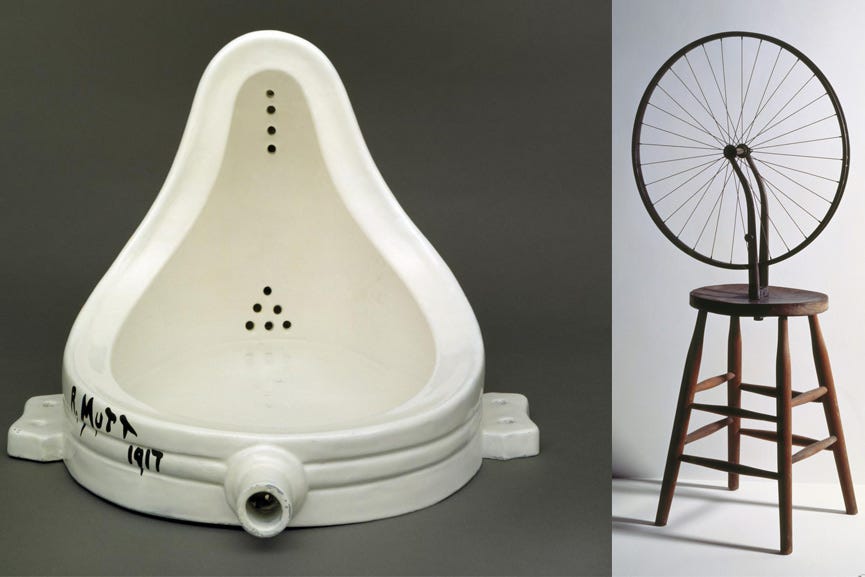Readymades vs. Generative AI

🌈 Abstract
The article explores the relationship between machine-made art, algorithms, and the concept of authorship in the context of contemporary art.
🙋 Q&A
[01] The Relationship Between Machine-Made Art and Algorithms
1. What is the key connection between Marcel Duchamp and Alan Turing? The key connection between Marcel Duchamp and Alan Turing is the use of rules or instructions to carry out tasks. Both explored the relationship between machines and human creativity, with Duchamp using manufactured objects in his "readymade" artworks, and Turing exploring machine intelligence that could theoretically play chess.
2. What are the three important points about Duchamp's "readymade" concept? The three important points about Duchamp's "readymade" concept are:
- The choice of object itself is a creative act
- By cancelling the "useful" function of an object, it becomes art
- The presentation and addition of a title to the object have given it "a new thought", a new meaning
3. How does the notion of authorship in machine-created artwork lie? The notion of authorship in machine-created artwork lies in who creates or establishes the rules. The article suggests that the artist is credited, not the machine(s) that generate the artwork.
[02] The Evolution of Machine-Made Art
1. How have other artists explored the practice of using found objects in their art? Other artists, such as David Hammons, have explored the use of found objects in their art, with the intention of prioritizing the work's meaning and intention over its monetary value. However, these works have often been auctioned off for high prices.
2. How have artists like Andy Warhol contributed to the development of digital, generative AI art? Artists like Andy Warhol sought to give autonomy to machines, especially to reproduce multiple versions of appropriated images. This set the stage for the emergence of digital, generative AI art, where the artist prompts the AI to create the artwork.
3. How are "Everydays" (digital, AI-generated artworks) compared to Duchamp's "readymades"? The article suggests that "Everydays" (digital, AI-generated artworks) are the new "readymades", as they involve the artist appropriating and presenting found or generated images as art, similar to Duchamp's concept.
[03] The Commercialization of Machine-Made Art
1. How has the art market responded to the emergence of generative AI art? The article notes that the "establishment" or art market still makes the rules for what counts as art, as evidenced by the auction of the first generative AI image by Christie's in 2018 and Sotheby's sale of a work created by generative AI in 2019. The most expensive non-fungible token (NFT) to date, Beeple's "Everydays: the First 5000 Days", was also sold at Christie's in 2021.
2. How has the author's own artistic practice evolved with the use of generative AI tools? The author has expanded their understanding of collage to include variations within the output images and the compositing of those images, often produced using multiple generative AI tools. Since 2019, there has been an increasing demand for their generative AI-created images.
3. What is the direct correlation between art and capitalism in the context of machine-made art? The article suggests that, similar to readymades and "Everydays", there is a direct correlation between art and capitalism, especially when the artist's signature is on the work, as it can lead to high auction prices.